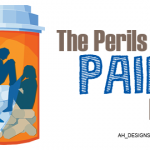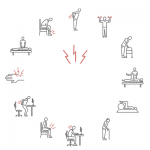
Editor’s note: Also see “False Assumptions”.
Case Study 1
A 34-year-old male presented to a rheumatologist for treatment and chronic pain. The patient had severe ankylosing spondylitis (AS) and end-stage hip osteoarthritis. Orthopedics was trying to avoid performing a hip replacement on him at such a young age. The rheumatologist was comfortable prescribing opioids and has treated many patients with scheduled drugs. The patient has had chronic pain for many years and has undergone multiple treatments, including physical therapy, steroid injections and many medications. On presentation, the patient was also on methocarbamol and oxycodone/acetaminophen (four times a day). His past history was positive for hypertension and alcohol abuse, although he stated he had not consumed alcohol in the past year. He worked as a laborer.
On exam, the patient was in moderate distress with his back pain. His blood pressure was elevated at 160/100. Low back and neurologic exam were normal. He had a decreased Schobers of 8 cm. X-rays showed severe AS and osteoarthritis of the right knee. The physician instituted infliximab at 400 mg/month, oxycodone at 10 mg (BID) for pain control and clonazepam for muscle spasm. On a follow-up visit two weeks later, the oxycodone was increased to 30 (BID).
Two days after the follow-up visit, the patient picked up the medicine at a local pharmacy. The next morning, the patient was found unarousable by his roommate and declared dead on scene by paramedics. The cause of death was polysubstance drug overdose with evidence of opioids, benzodiazepines and alcohol on the toxicology screen. A lawsuit was filed against the physician.
Case Study 2
A rheumatologist had been seeing a 65-year-old female patient for years. The patient had severe rheumatoid arthritis and had taken many prednisone courses over the years. She developed an osteoporotic thoracic spine fracture and was eventually prescribed hydrocodone/APAP 5/325, 240 pills a month.
Because of the increased publicity surrounding the opioid epidemic, the physician worried that the patient was getting too much medication. This was only one of a handful of patients in his practice on opioids. As time went on, the patient became increasingly belligerent with the physician’s staff, and he decided to terminate her from his practice. The physician wrote a dismissal letter to the patient. There were several loud and angry phone calls during the next month. Three months later, the physician received a complaint letter from the state medical board. The physician called the risk manager of his medical group and asked, “Did I do anything wrong here?”
Case Analysis
The first case revolves around the issue of responsible prescribing. Was there an adequate assessment of the risk factors for accidental overdose in this patient, and was the therapy appropriate for the patient’s diagnosis? Was there thorough documentation around the risks and benefits of opioids, and were there attempts to wean or use alternative treatments? Were there discussions with the patient about the issues of polypharmacy and concurrent use of alcohol? Was there an opioid agreement and consent in place? If the answers to these questions were documented in a manner that shows reasonable care, then this will be a very defensible case.



